

/en/powerpoint2016/modifying-themes/content/
You may have noticed that when you select a different theme in PowerPoint, it rearranges the text on your slides and adds shapes to the background. This is because each theme has built-in slide layouts and background graphics. You can edit these layouts with a feature called Slide Master view. Once you learn how to use Slide Master view, you'll be able to customize your entire slide show with just a few clicks.
Watch the video below to learn more about using Slide Master view.
Slide Master view is a special feature in PowerPoint that allows you to quickly modify the slides and slide layouts in your presentation. From there, you can edit the slide master, which will affect every slide in the presentation. You can also modify individual slide layouts, which will change any slides using those layouts.
For example, let's say you find a theme you like but you don't like a few of the slide layouts. You could use Slide Master view to customize the layouts to look exactly the way you want.
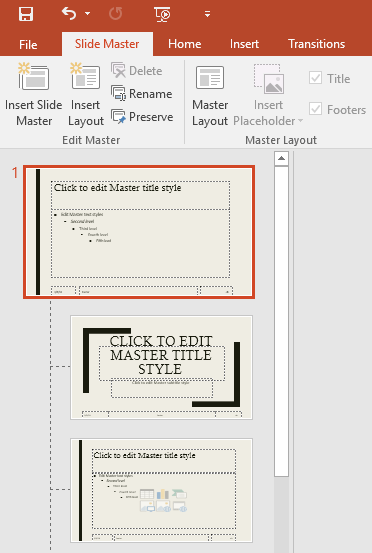
In Slide Master view, the Slide Master tab will appear first on the Ribbon, but you'll still be able to access commands on different tabs as normal.
Whether you're making significant changes to your slides or just a few small tweaks, Slide Master view can help you create a consistent, professional presentation without a lot of effort. You could use Slide Master view to change just about anything in your presentation, but here are some of its most common uses.
Some overall presentation changes—like customizing the theme fonts and theme colors—can be made quickly from the Design tab. Review our lesson on Modifying Themes to learn more.
If you want to change something on all slides of your presentation, you can edit the Slide Master. In our example, we'll add a logo to every slide. If you'd like to work along with our example, right-click the image below and save it to your computer.


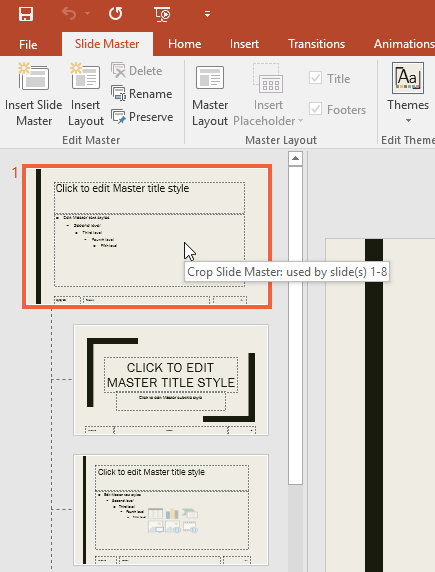
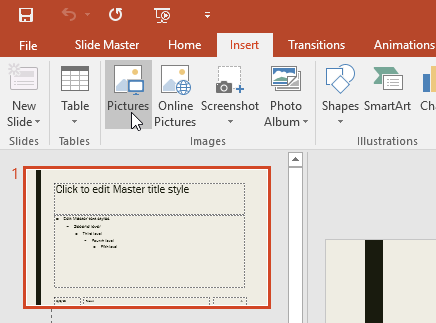


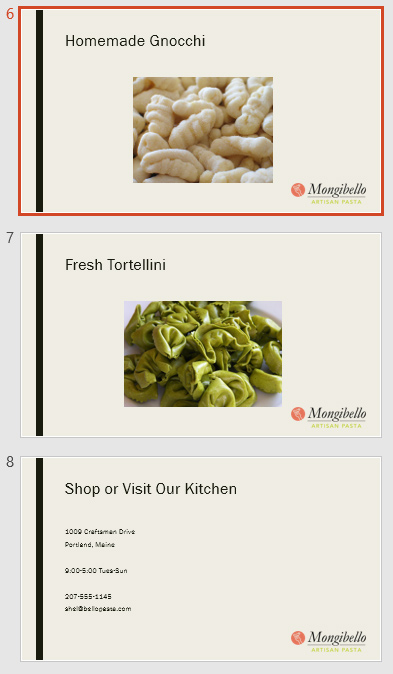
When you make a change to the slide master, it's a good idea to review your presentation to see how it affects each slide. You may find that some of your slides don't look exactly right. On the next page, we'll show you how to fix this by customizing individual slide layouts.
You can use Slide Master view to modify any slide layout in your presentation. It's easy to make small tweaks like adjusting background graphics and more significant changes like rearranging or deleting placeholders. Unlike the slide master, changes to a slide layout will only be applied to slides using that layout in your presentation.
In our example, our newly added logo is hidden behind the photo in the Picture with Caption Layout. We'll customize this layout to make room for the logo.

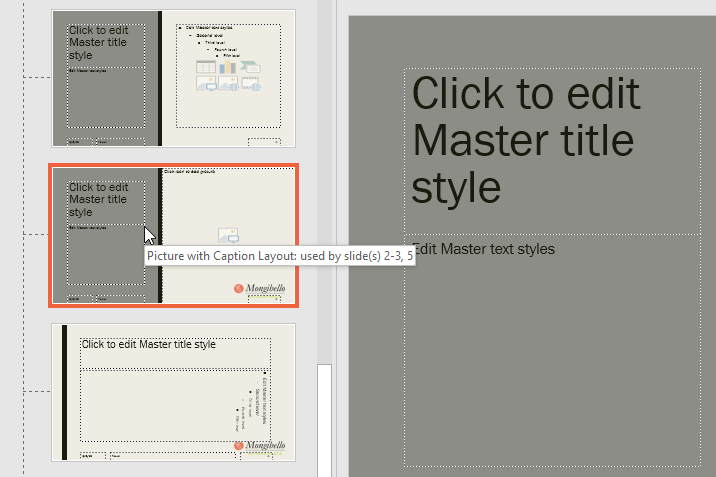

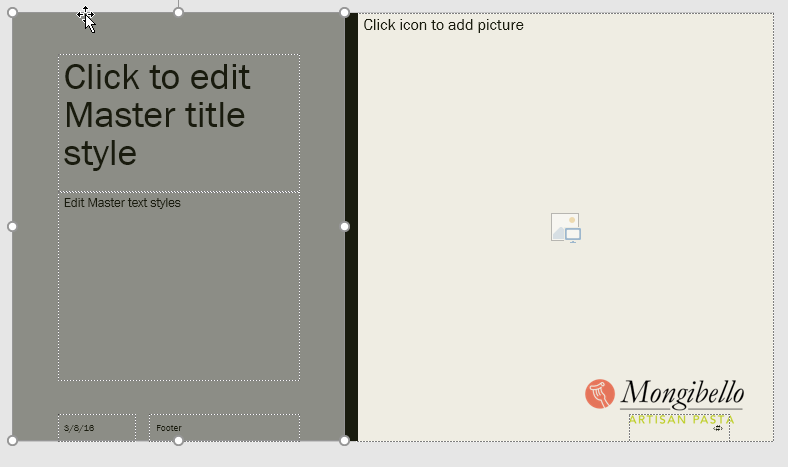
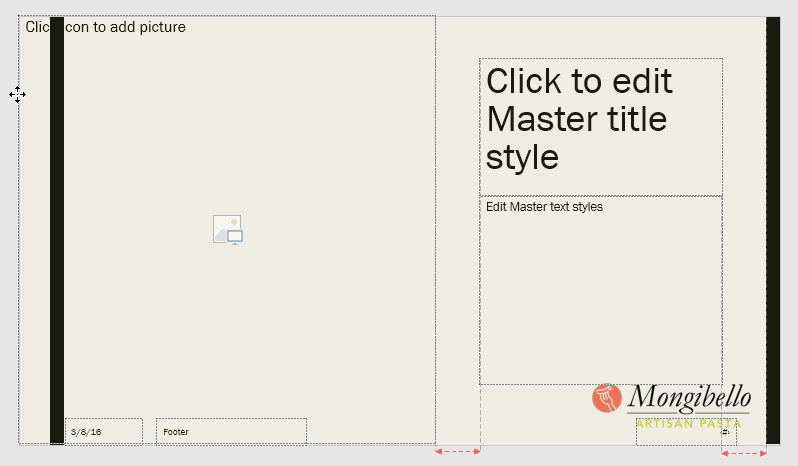


You can also move placeholders on the slide master, which will move the placeholders on multiple slide layouts at the same time. However, some slide layouts may still need to be adjusted manually.
You can also customize the text formatting from Slide Master view, including the font, text size, color, and alignment. For example, if you wanted to change the font for every title placeholder in your presentation, you could modify the master title style on the slide master.
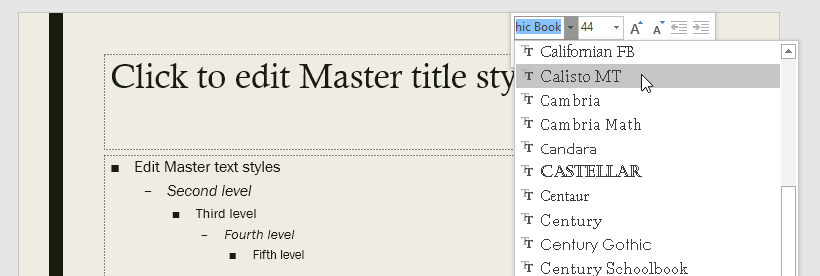
Each title placeholder is connected to the master title style on the slide master. For example, take a look at the slides before changing the title font.
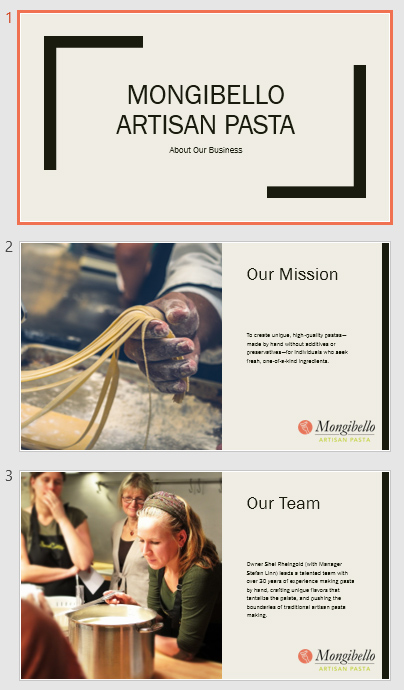
Now look at the same slides after changing the title font.
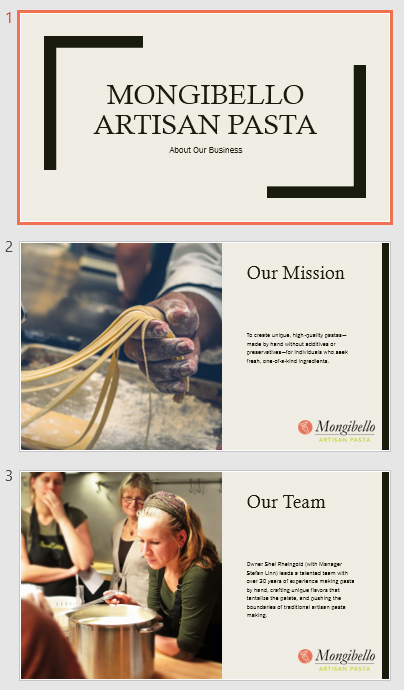
Instead of customizing individual placeholders, you could change the theme fonts for a presentation. From the Slide Master tab, click the Fonts command in the Background group, then select the desired fonts.
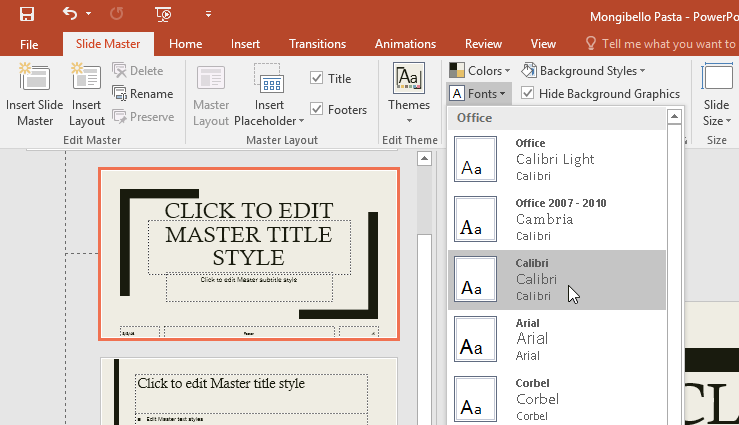
One of the most powerful features of Slide Master view is the option to create new slide layouts. This is an easy way to add interesting and unique slide layouts to an existing theme. You could even use this feature to design an entirely new theme, as in the example below.
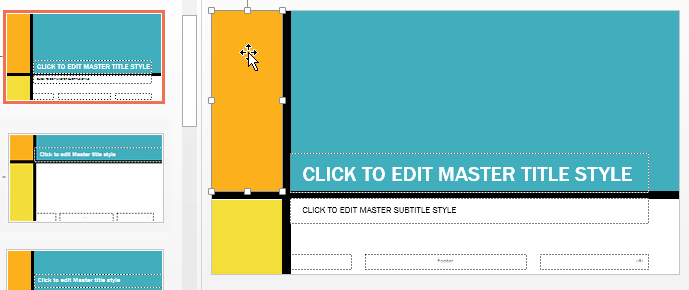
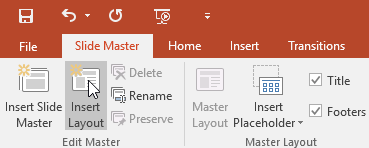
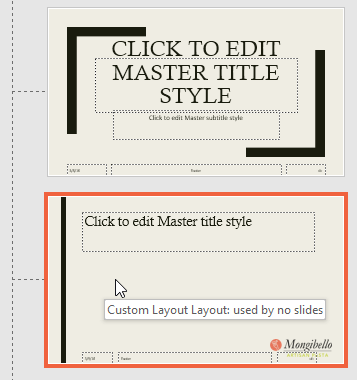
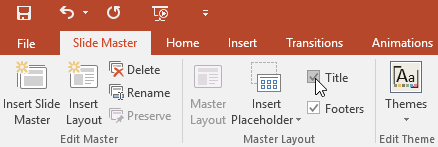
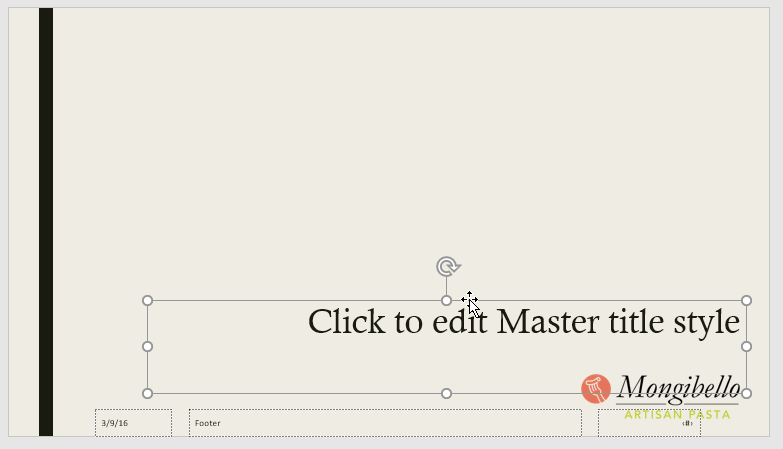
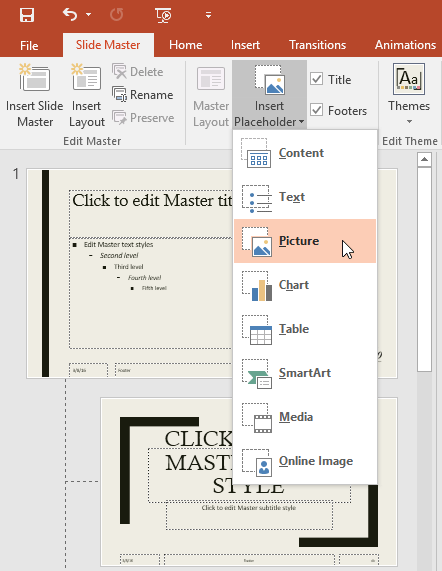
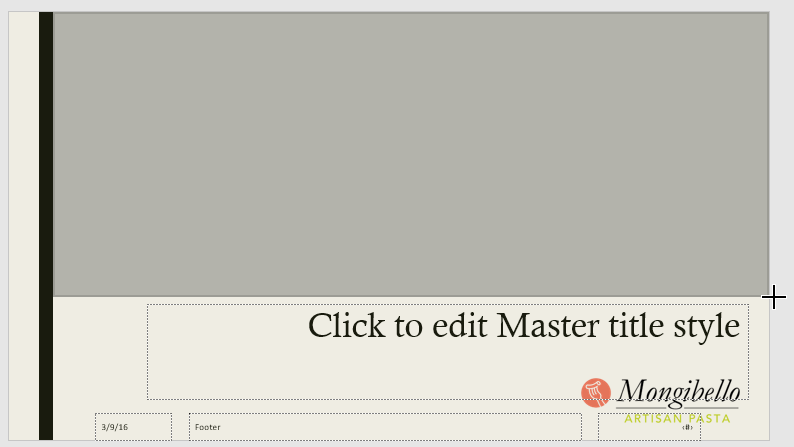
When you're done designing your custom layout, you'll want to give it a unique name so it will be easy to find.
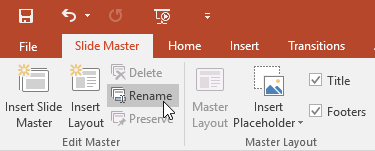
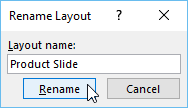
Once you've created a custom slide layout, it's easy to add a new slide with that layout or apply it to an existing slide.
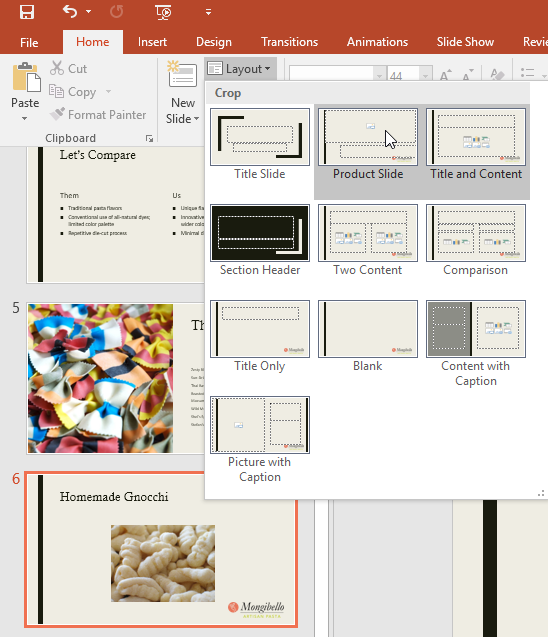

PowerPoint also allows you to add new placeholders to existing slide layouts.
When you modify the slide master or slide layouts in Slide Master view, you're actually creating a custom version of the current theme. If you want to apply the theme to other presentations, you'll need to save it.
From the the Slide Master tab, click the Themes command, then select Save Current Theme from the drop-down menu.
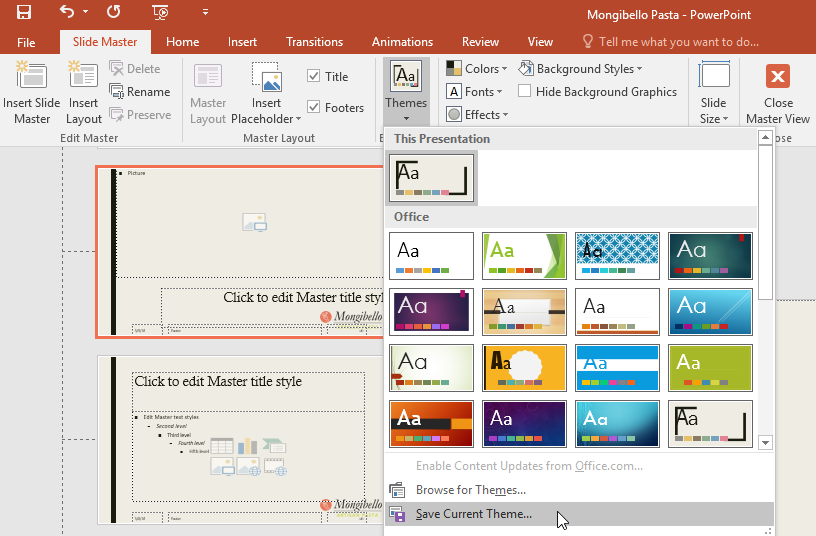
If you're not in Slide Master view, you can save the theme from the Design tab. Just click the drop-down arrow in the Themes group, then select Save Current Theme.
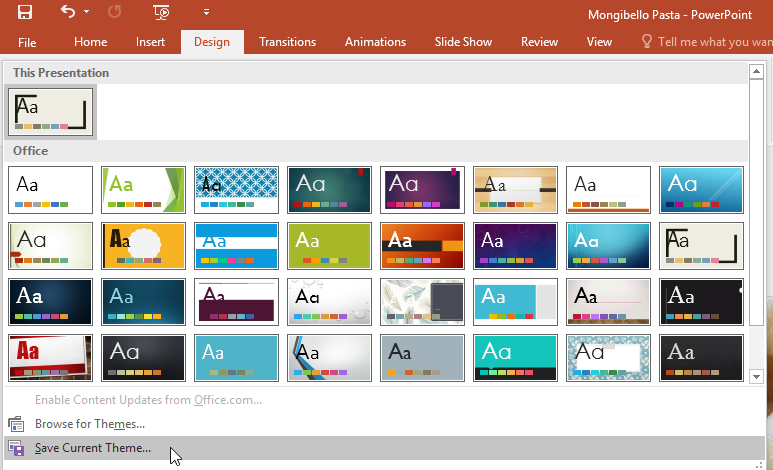
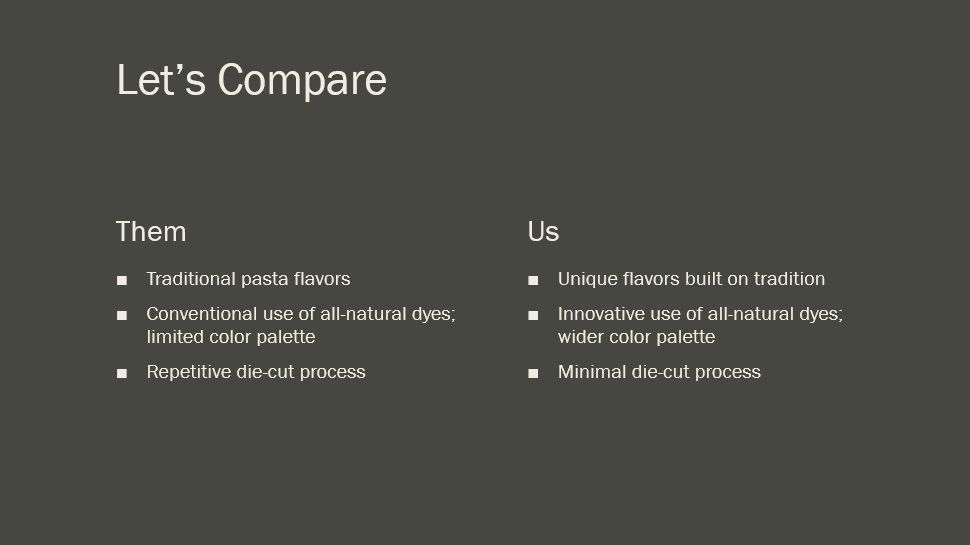

/en/powerpoint2016/hyperlinks/content/